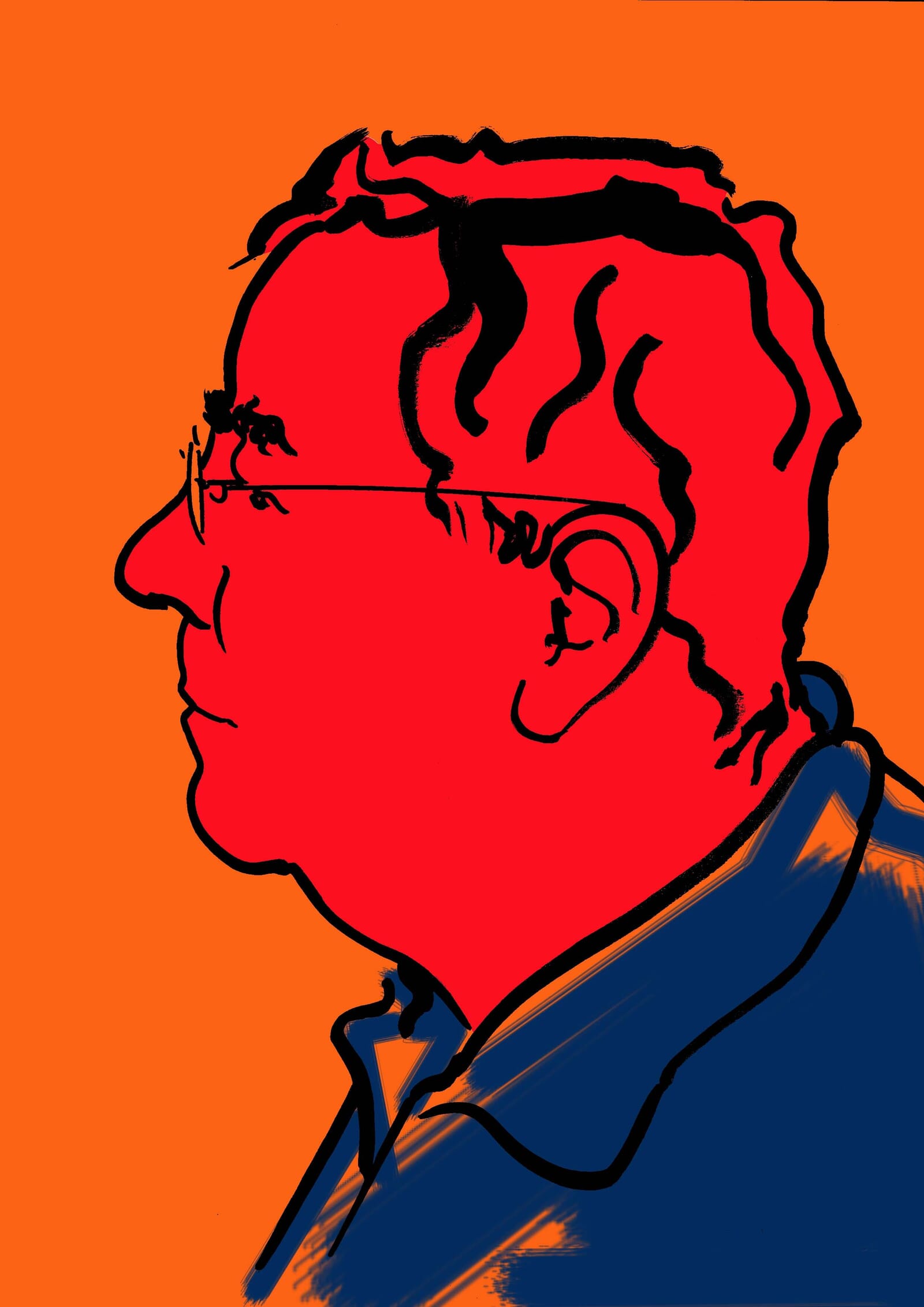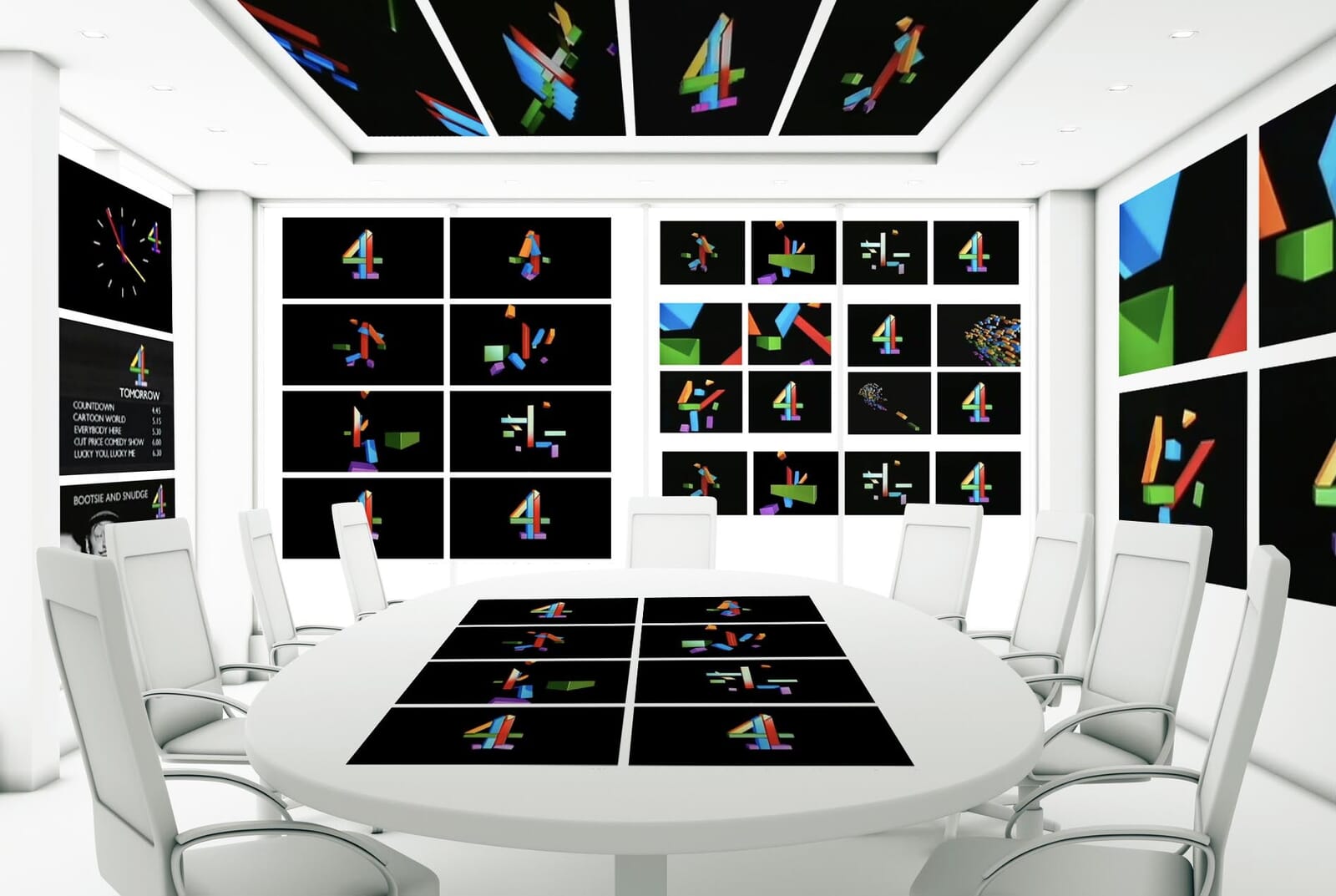

Martin and I first met in the mid-nineties.
We were both speaking at a student event. I was only a few years into self-employment and was nervously catastrophising over my over-full carousel of underwhelming projects.
Meanwhile Martin had brought precisely ZERO slides. He simply stood up and told stories about his work. Even then each of his projects were firmly embedded into our collective psyche and each illustrated his tell-tale traits of unnerving simplicity, bullet-proof logic and compelling creativity.
And as we now look back over his milestone projects, from the ground-breaking computer graphics of the Channel 4 launch to his reinvention of the BBC ‘2’, to the ever-moving BBC1 balloon, those three tenets hold every time.
He had a laser-like ability to cut through the noise that inevitably encircles big branding projects. Twenty years ago his researchers discovered that mobile phones were becoming as essential as house keys or a wallet. Now, for many of us that’s pretty obvious – albeit not obviously useful. But for Martin this propelled a creative ‘jump’ into the other essentials of life – water, food, oxygen – which in turn inspired the 02 brand. When asked to help out on HSBC’s brand, he simply took the vast and seemingly unwieldy problem back to his kitchen table then returned days later with the obvious solution. Simple, logical, creative. Do you see the pattern?
Of course the danger to ideas as reductionist as these are the committees who judge them – hardwired to meddle and muddle, to complicate, not congratulate. So Martin’s other great skill was his ability to stand up, take the flak and charm people into submission. He would proudly tell me tales of facing up to hundreds of BBC staff who wanted to pull him into tiny pieces because of his creative suggestions. As with Wolff and Olins, Fletcher, Minale and McConnell, Martin was part of a generation that learned to survive, even thrive in the boardroom – and showed us all the way.
Like many greats, he was instrumental in nurturing the next generation through the various iterations of Lambie-Nairn companies, still teaching into his seventies, still inspiring others as he did with Fluck, Law and Spitting Image. He was also miles ahead of many others in describing his work as ‘brand identity’ – a term now universally acknowledged decades later. And the work itself is often timeless. Channel Four? Still in use 40 years later. 02? Approaching its 20th birthday. Even the recent BBC2 refresh harks back to what Martin began in the nineties.
His mantlepiece must have been splendid – a ‘black’ pencil for Channel 4 and multiple yellow pencils for his BBC work. In 1991 he was D&AD’s President, then received its highest prize, the President’s Award, a few years later. But in characteristically ‘Martin’ good-humour he once admitted to me that he was glad he’d been President relatively early – because it ‘didn’t involve much actual work back then’.
And that happy, story-telling Martin is the one I’ll remember most. He once told me about a key Channel Four presentation when they were down to the last two. Up against a much bigger and long-established competitor, his fledgling company plastered the room with ideas to demonstrate their hunger and desire to do the job.
He even told me that they put ideas on the ceiling. Now it turns out that he MIGHT have been stretching the truth there, just a little bit. But, for the sake of a great story, and a great man, I forgive him.
By Michael Johnson, Johnson Banks, remembering Martin Lambie-Nairn, 1945-2020
